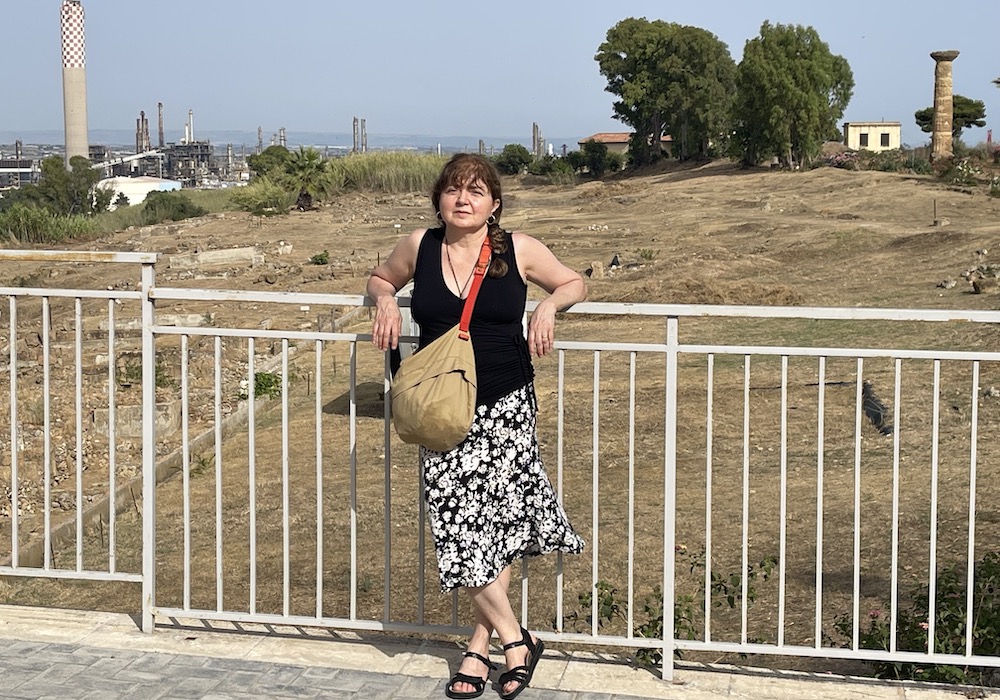If each city is like a game of chess, the day when I have learned the rules, I shall finally possess my empire, even if I shall never succeed in knowing all the cities it contains.
—Italo Calvino, Invisible Cities
Can you describe the mood of Berlin as you feel/see it?
On the one hand a sense of drift and vulnerability, flashbacks to bad times. After the frayed nerves and claustrophobia of Covid came the war in Ukraine and the energy crisis. New crises bring echoes of old ones. In early 2020, we were confined to walking distance; from where I live in the east of Berlin, the west seemed unreachable. I thought: maybe it felt like this when the Wall was standing. Three years later, everything is in motion, and several hundred thousand Ukrainian refugees have come. You see them wherever you go; as often as not, they’re speaking Russian. The city is haunted by past conflicts with Russia, past friendships with Russia, and dazed to find itself, once again, under very different auspices, facing Russia across battle lines.
At the same time, for all the angst in the air, Berliners are pretty unflappable and doing their best to keep some kind of normal life going for everyone. Sometimes, despite their reputation, they’re even quite friendly!
What is your most heartbreaking memory in this city?
See above: the memories made these past few years.
What is the most extraordinary detail, one that goes unnoticed by most, of the city?
I’m fond of the old mulberry tree in the backyard of Friedrichstrasse 129, supposedly planted by Huguenots who came to Berlin in the seventeenth century fleeing religious persecution. It’s big and gnarled and propped up by crutches—a lovely bit of (natural) history just off a busy, soulless stretch of street.
What writer(s) from here should we read?
You can’t go wrong with Alfred Döblin’s Berlin Alexanderplatz. For an idiosyncratic flapper’s take on Weimar-era Berlin, I love Irmgard Keun’s The Artificial Silk Girl. And for a sense of 1980s East Berlin, with its postmodern underground scene shot through by Stasi paranoia, you could try my translation of Wolfgang Hilbig’s “I.”
Is there a place here you return to often?
I often go walking in the nearby Schönholzer Heide, which looks like nothing more than a forest but has many layers of history: traces of a 1920s amusement park, of a Nazi-era forced labor camp, of the Berlin Wall, of an East German open-air theater, and at one end, surreally preserved and maintained, a Soviet war memorial.
Is there an iconic literary place we should know?
The Literarisches Colloquium Berlin, a gracious (in every sense of the word) mansion on Wannsee lake that for sixty years has held readings and workshops and hosted writers and translators from around the world.
Are there hidden cities within this city that have intrigued or seduced you?
I came here looking for the East Berlin I saw across the Berlin Wall in 1987 as an eighth grader on an exchange program. And the longer I’ve lived here, the more I know I’ll never know!
Where does passion live here?
In small-scale venues and initiatives, cultural, social, or environmental, utopian or pragmatic, that create their own little microcosms—unconcerned with hipness and social media, focused on tackling problems, creating connections, and having a good time in the here and now.
What is the title of one of your works about Berlin and what inspired it exactly?
The Poison of the Honey Bee is a title taken from a William Blake poem, and the novel describes a 1990s utopian microcosm gone awry.
Inspired by Levi, “Outside Berlin does an outside exist?”
Outside Berlin is the Brandenburg countryside, and since I go walking there nearly every week, I’m pretty sure it exists!
Isabel Fargo Cole grew up in New York City, received a BA from the University of Chicago in 1995, and has lived in Berlin ever since as a writer and translator of authors such as Wolfgang Hilbig, Franz Fühmann, and Adalbert Stifter. Her translation of Hilbig’s Old Rendering Plant received the Kurt & Helen Wolff Prize in 2018. Since 2005, she has published short fiction and essays in German. Her debut novel, Die grüne Grenze (Edition Nautilus, 2017), was nominated for the Prize of the Leipzig Book Fair; her second novel, Das Gift der Biene, was published by Edition Nautilus in 2019 and selected for the 2019 LiteraTour Nord. In 2022, Die Goldküste. Eine Irrfahrt appeared in the “Naturkunden” nature writing series at Matthes und Seitz. From 2006–16, she co-edited no man’s land, an online magazine for new German literature in English. In 2013, she was a co-organizer of the initiative “Writers Against Mass Surveillance.” She organizes the initiative www.waldschaffen.de, which involves Berlin artists and writers in forestry projects.
Copyright © 2023 by Isabel Fargo Cole. All rights reserved.











